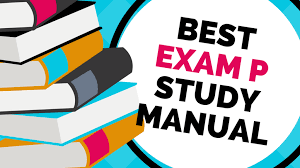
The elements involved have to be well-known to better appreciate the scope of this emerging philosophy:
Actors: teachers, students and parents. Each one of them will see things differently, and knowing how to make them buy your new proposition will be the key to your success.
Processes: lesson preparation, outside of classroom time, inside of classroom time, evaluation.
WHAT
It's an alternative to the traditional teacher/lecture centered approach. In a flipped strategy classroom contents are multimedia based and are accessed through some LMS outside of school. Classroom time is used to deepen that home-acquired knowledge using other strategies, as project based learning, collaborative tasks, etc.
For teachers it is a great way to improve lessons' structure. Resources can be mapped from the syllabus and new activities can be implemented for classroom time. For students it can be challenging, after all you are taking them out of their classical school environment. But they are also given the opportunity to be in charge of their own education, and they can even set their own pace in the process. For parents it's an excellent opportunity to take part and track their children's education.
WHY
Our world is changing. New technologies are gaining power, societies are readapting their habits and schools should improve in the same manner. Our students, who are used to manipulate complex devices like mobile phones, are getting more and more bored in front of paper books and crave for multimedia based, dynamic, colourful, and interactive contents.
A teacher can find a great ally in flipping to engage his students, apply new techniques and create a personal reusable repository of well-selected contents. But not only teachers, students can also take advantage of being empowered and trusted. For them it could be seen like being abandoned in the middle of the dessert, but let's not forget that constructivism also deals with uncertainty, and that's a relevant factor for learning reinforcement.
WHEN
There are two whens. The first one is related to preparation. The more quality contents you want, the more time you will have to expend curating them. Anyway it's important not to be over exigent about them and check their effectiveness (some polls can be done to know the opinion of your students). Your repository should be something flexible and dynamic. If it's not, then it mightn't work.
The second when is about the time students invest at home, I.e, when should students work after school? That's a tricky question as you lose control of them after they have got out of school. Each student will have a different agenda: sports, music, etc. Then this factor shouldn't preoccupy us excessively, but keeping a record of your students' complains about not having enough time could be of help for strategy improvement. If out of school time is scarce, flipping could be approached differently.
WHERE
For teachers, where can quality materials be found? My own strategy was to curate a good PLE with plenty of resources classified in: presentations, social networking, documentaries and videos, research, production, publication, citation, collaboration, storage, project management, coding, and augmented reality and virtual worlds. What you shouldn't do is just scan your notes, save to a PDF and publish it. There wouldn't be any engagement.
For students the where refers to what place to check lesson's contents. Forget computers and focus on mobile devices. In fact those are the ones accompanying teenagers everywhere. It's more likely to find a student laying on the sofa, sitting on a bench in the park, or waiting in a mall's entrance for his friends with a mobile on his palm than seeing him sitting down in front of a computer at home. Make it flexible and affordable for them.
HOW
And finally the how-to's. For teachers it is about how to set up an effective
LMS, look for engaging resources, do engage students, and make the rest of the parts involved participate constructively.
LMSs include Moodle (my favourite one and free of charge), Google Apps for Education, TalentLMS or Edmodo among many others. You can bet for one option or weave a combination of them, being the second option more preferable. Moodle is great to track your students' activity, workshops (students grading other students), do exams and to gamify your lessons, while Google rules with documents and real-time collaboration.
Keep in mind your students remain the same (so what you take in count for common classes should be considered likewise for your LMS), they need to communicate, tell things, show off, wear mobile devices, only fix their attention for a short time, want recognition, socialise, want practical, close to their lives exercises and ask for colourful and interactive means. Even more, they should be given the opportunity to reflect what they have inside their minds to better settle it down. Thus, take advantage of such profile. Flipping is just a framework where to apply many other strategies (gamification, project based learning, multiple intelligences, role playing, etc), but the participants are still the same.
Let me shed some light and make things practical through the following example:
A lesson about Natural Sciences: mass, volume, density, pressure and temperature are the concepts to work with. I want my students to read the definitions, see a couple of videos, manipulate a simulation and write the conclusions in teams. Maximum estimated time outside school: 30 mins.
I set up two/three conditional activities in Moodle so they will be hiding and will appear consecutively. Videos are selected from YouTube and some simulations from PHET. Students will accomplish these tasks on their own or in teams. Final conclusions will be written in a shared Google doc in teams. Each student will make a quick test exam in Moodle. Having completed everything the team will be granted a badge and be put in a leaderboard (gamification's PBL model).
Next day in the classroom we'll discuss about the concepts, experiments, conclusions and corrections. Each team will publish its own work in a blog or site and will score other teams' work in a Moodle workshop. That will be used as a final grade percentage, only earned if a minimum amount of badges have been collected during the term. As new lessons are analysed students will go on curating their own PLE. That will also be scored.

- Becoming a firefighter doesnt result in you completing a firefighter exam and being awarded a job, its a detailed process filled with various courses

- Pass4itsure ensures that you are on the right path with the help of NSE5 exam dumps and Fortinet certification exam preparation materials.

- certstopass.com is the best company that provides that is a very helpful study material. Werefocused toassist everybody whos currentlypreparing for theexams

- Testertools is the Largest Open Source Software Testing Tool and Commercial off the Shelf Tool website on the internet, including a dedicated Ajax Testing